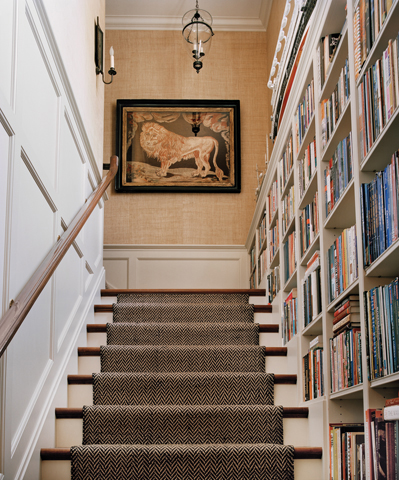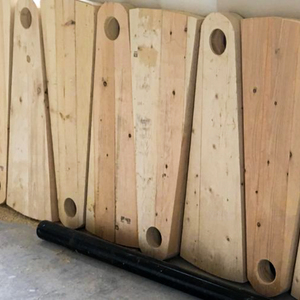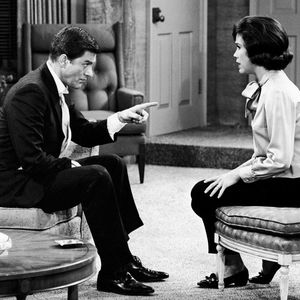
Image Credit: Ferguson and Shamamian Architects - www.fergusonshamamian.com
Stair design requires attention to all of the usual rules of residential design. Stairs should be graceful, useful, and comfortable. In addition, stairs must also be safe. Clearly, safety is more important for stair design than for most design issues (for example, ceiling height or window orientation).
Once you understand the basic principles of stair design, you’ll probably notice that lots of stairs lack a graspable handrail, or have inconsistent riser heights, or are dimly lit. Examples of flawed stairs are unfortunately common.
Why should green builders care?
Is stair design a green issue? Perhaps. There are at least two ways that stair safety principles are in mild conflict with green construction principles:
- Safe stairs require a larger area than unsafe stairs; devoting more area to stairs conflicts with the green principle favoring smaller houses.
- Safe stairs requires excellent lighting; this conflicts with the green principle favoring reduced energy use.
I don’t want to belabor these two points, because the conflicts are obviously minor. Safety clearly trumps building size targets or energy use targets.
Code requirements
There are lots of good online documents on code requirements for stairs; for example:
Stair safety basics
I won’t try to recreate these guides here. Instead, I’ll focus on the most common stair safety issues.
Designers and builders need to get these important details right:
Weekly Newsletter
Get building science and energy efficiency advice, plus special offers, in your inbox.

This article is only available to GBA Prime Members
Sign up for a free trial and get instant access to this article as well as GBA’s complete library of premium articles and construction details.
Start Free TrialAlready a member? Log in















12 Comments
How to compute exact riser height and tread depth
Agree that 7" should be the maximum riser height, and strive for closer to 6" for safety and ease of climbing stairs, especially for children and the elderly.
I’d add something like the following, for those who can’t view the Fine Homebuilding “subscribers only” article:
To compute the exact riser height and tread depth for your stairway:
1. Measure the vertical distance between the finish floors (height floor to floor). Divide by 7”. That tells you the approximate number of steps up the stairway, which is the number of risers. (That number might be about 15.4 for 8 foot ceilings plus floor framing.) Round the number up or down, preferably up, to the nearest integer (no fractions or decimals for the number of risers).
2. Divide the floor-to-floor height by the number of risers. That tells you the height of each riser. It should be about 7” (maximum 7 ¾” allowed). For a less steep stairway for the safety of children and ease of climbing stairs by the elderly, try to get riser height closer to 6”, by increasing the number of risers by 1.
3. Once you have the riser height, compute a comfortable and safe tread depth for that riser height:
• Tread depth equals 25" minus twice the riser height
For a riser height of 7”, that gives you a tread depth of 11”
For a riser height of 6.5”, that gives you a tread depth of 12”
4. The treads must stick out beyond the risers about 1” (3/4” minimum to 1 ¼” maximum allowed), called “nosing”. Therefore your tread stock must be tread depth plus nosing, or 11” + 1” = 12” depth (or 12” + 1” = 13” depth). If you design the risers to rest on top of the treads and reach the bottom of the tread above it, the tread stock also must be increased by the thickness of the riser boards, typically another ¾”.
5. Riser stock would be less than the rise described above, by subtracting the thickness of any tread stock above and below it. Useful to draw a diagram of the stair design.
Tread depth
Robert,
Item 3 above yields longer tread for a shorter rise. That intuitively seems backward to me. Is matching a typical stride more important than controlling the steepness?
Tread depth
Reid,
Yes the formulas for computing tread width will make a comfortable and safe stride up and down stairs for adults. There are a few different formulas but they all yield similar results. Less steep stairs have both shorter rise and longer run (tread). Steep stairs have longer rise and shorter run. Like a ladder has a steep rise but very short run, and outdoor stairs have more like a 6" rise and 12" run, so you can't tumble down slippery outdoor stairs like you would tumble down a steep interior stairway or ladder.
Treads
One of the reasons tread width is often shorter than might be desirable is that the stock they are commonly made from (both lumber and pre-made OSB) is typically 11" to 11 1/2".
NAHB
Just because the NAHB has "very deep pockets" doesn't mean they didn't have valid arguments against the 7-11 minimum. There is a lot more to such issues than "is it safer, if yes then make it mandatory."
Interesting that the Massachusetts amendments to ICC 2018 allow a 8-1/4" riser height for one and two family house stairs.
hello, using those:
- vertical distance between the finish floors: 116 1/2"
- floor opening is 115" x 42"
- floor thickness is 20" and will be at 45 degrees
Did some calculations and in order to leave at least 6 ' 5" of head space, here are my 2 choices:
1. 15 steps with 11" threads (with 1 inch nosing) and 7 3/4" risers
2. 16 steps with 10 1/2" threads (with 1 inch nosing) and 7 1/4" risers
Which choice would be better/safer? (hopefully I did my calculations right...)
Any other option possible? I see nosing can be from 3/4" to 1 1/4" as well. Thanks
Stephane,
Assuming your local code official agrees, either approach would work. If this were my house, I would prefer the stairs with 7 1/4 inch risers.
Note that the head space issue is tricky, and depends in part on the location of each tread with respect to the floor opening. Make sure to create an elevation drawing to ensure that the head space calculations are correct.
Thanks Martin, followed your suggestion, used Sketchup for the drawing and here is the result (note that I will use a central steel stringer with 2 inches thick wood steps, not shown on the drawing). I have exactly 6' 5" from the steps to the angled floor... at the limit. Does it make sense to you?
Stephane,
I don't know what code you are under, but most measure the required head height from a diagonal line that connects all the stair nosings. You may have more room that you think?
Malcolm, you are right, the code says from the diagonal line (insead of the way I measured on my diagram). This means I can extend the steps to 10 3/4" and still have 6' 7 1/2" available. My 2 sons are 6'2" and 6'4", will not go under 6'7". Thanks!
Stephane,
Good stuff! I am currently sporting a large bruise/cut on the top of my head from working in a crawlspace slightly less than my height.
Log in or become a member to post a comment.
Sign up Log in